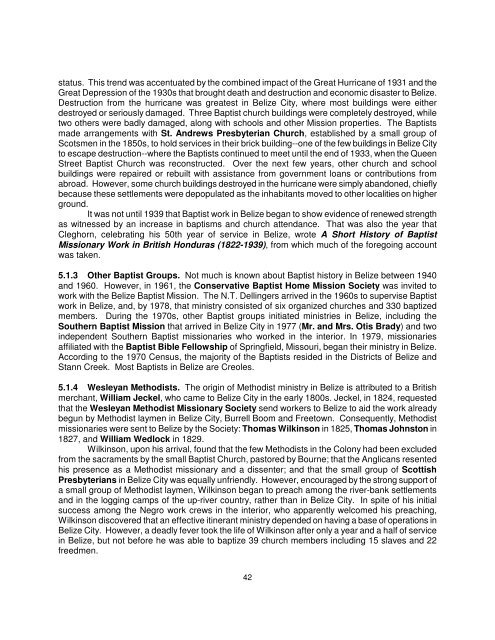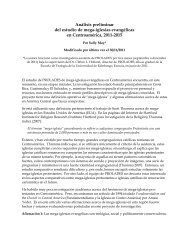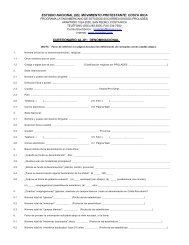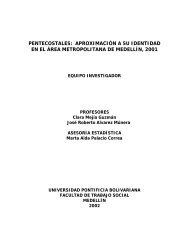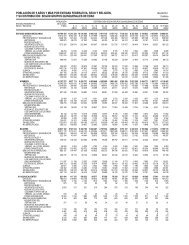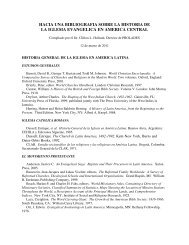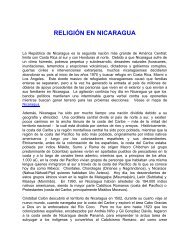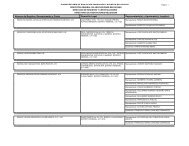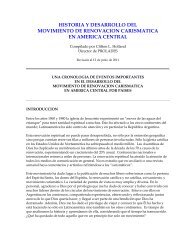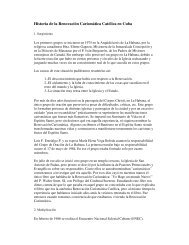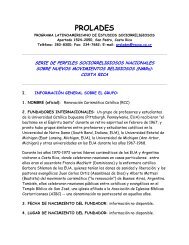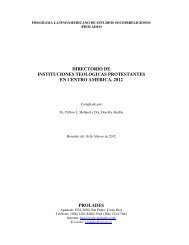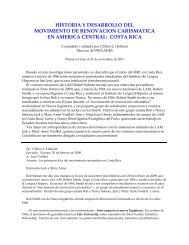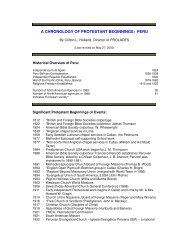belize, 1980 - Prolades.com
belize, 1980 - Prolades.com
belize, 1980 - Prolades.com
You also want an ePaper? Increase the reach of your titles
YUMPU automatically turns print PDFs into web optimized ePapers that Google loves.
status. This trend was accentuated by the <strong>com</strong>bined impact of the Great Hurricane of 1931 and the<br />
Great Depression of the 1930s that brought death and destruction and economic disaster to Belize.<br />
Destruction from the hurricane was greatest in Belize City, where most buildings were either<br />
destroyed or seriously damaged. Three Baptist church buildings were <strong>com</strong>pletely destroyed, while<br />
two others were badly damaged, along with schools and other Mission properties. The Baptists<br />
made arrangements with St. Andrews Presbyterian Church, established by a small group of<br />
Scotsmen in the 1850s, to hold services in their brick building--one of the few buildings in Belize City<br />
to escape destruction--where the Baptists continued to meet until the end of 1933, when the Queen<br />
Street Baptist Church was reconstructed. Over the next few years, other church and school<br />
buildings were repaired or rebuilt with assistance from government loans or contributions from<br />
abroad. However, some church buildings destroyed in the hurricane were simply abandoned, chiefly<br />
because these settlements were depopulated as the inhabitants moved to other localities on higher<br />
ground.<br />
It was not until 1939 that Baptist work in Belize began to show evidence of renewed strength<br />
as witnessed by an increase in baptisms and church attendance. That was also the year that<br />
Cleghorn, celebrating his 50th year of service in Belize, wrote A Short History of Baptist<br />
Missionary Work in British Honduras (1822-1939), from which much of the foregoing account<br />
was taken.<br />
5.1.3 Other Baptist Groups. Not much is known about Baptist history in Belize between 1940<br />
and 1960. However, in 1961, the Conservative Baptist Home Mission Society was invited to<br />
work with the Belize Baptist Mission. The N.T. Dellingers arrived in the 1960s to supervise Baptist<br />
work in Belize, and, by 1978, that ministry consisted of six organized churches and 330 baptized<br />
members. During the 1970s, other Baptist groups initiated ministries in Belize, including the<br />
Southern Baptist Mission that arrived in Belize City in 1977 (Mr. and Mrs. Otis Brady) and two<br />
independent Southern Baptist missionaries who worked in the interior. In 1979, missionaries<br />
affiliated with the Baptist Bible Fellowship of Springfield, Missouri, began their ministry in Belize.<br />
According to the 1970 Census, the majority of the Baptists resided in the Districts of Belize and<br />
Stann Creek. Most Baptists in Belize are Creoles.<br />
5.1.4 Wesleyan Methodists. The origin of Methodist ministry in Belize is attributed to a British<br />
merchant, William Jeckel, who came to Belize City in the early 1800s. Jeckel, in 1824, requested<br />
that the Wesleyan Methodist Missionary Society send workers to Belize to aid the work already<br />
begun by Methodist laymen in Belize City, Burrell Boom and Freetown. Consequently, Methodist<br />
missionaries were sent to Belize by the Society: Thomas Wilkinson in 1825, Thomas Johnston in<br />
1827, and William Wedlock in 1829.<br />
Wilkinson, upon his arrival, found that the few Methodists in the Colony had been excluded<br />
from the sacraments by the small Baptist Church, pastored by Bourne; that the Anglicans resented<br />
his presence as a Methodist missionary and a dissenter; and that the small group of Scottish<br />
Presbyterians in Belize City was equally unfriendly. However, encouraged by the strong support of<br />
a small group of Methodist laymen, Wilkinson began to preach among the river-bank settlements<br />
and in the logging camps of the up-river country, rather than in Belize City. In spite of his initial<br />
success among the Negro work crews in the interior, who apparently wel<strong>com</strong>ed his preaching,<br />
Wilkinson discovered that an effective itinerant ministry depended on having a base of operations in<br />
Belize City. However, a deadly fever took the life of Wilkinson after only a year and a half of service<br />
in Belize, but not before he was able to baptize 39 church members including 15 slaves and 22<br />
freedmen.<br />
42


